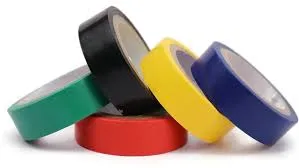Understanding Butyl Sealant Rope A Comprehensive Guide
In the realm of construction and home improvement, ensuring a tight seal against air, moisture, and dust is critical. One material that stands out in achieving these effects is butyl sealant rope. Known for its versatility and effectiveness, butyl sealant rope is a favorite among DIY enthusiasts and professionals alike. This article delves into its properties, applications, and key advantages, providing a thorough understanding of this essential product.
What is Butyl Sealant Rope?
Butyl sealant rope is a type of sealing material composed primarily of butyl rubber. This rubber band-like substance is renowned for its adhesive properties and is often manufactured in a rope-like form for ease of application. The texture is typically soft and pliable, allowing it to conform to various shapes and surfaces, creating a snug fit that prevents unwanted leaks and drafts.
Key Characteristics
1. Durability One of the standout features of butyl sealant rope is its durability. It’s designed to withstand extreme weather conditions, making it suitable for both indoor and outdoor applications. Its resistance to UV rays, ozone, and temperature fluctuations means that it doesn’t degrade easily over time.
2. Adhesive Properties Butyl rubber exhibits excellent adhesion to a variety of surfaces, including wood, metal, glass, and plastics. This characteristic ensures that once the sealant is applied, it remains in place without the need for additional fasteners or adhesives.
3. Flexibility and Ease of Use The pliable nature of butyl sealant rope allows it to be easily manipulated during application. It can be stretched and molded to fit more complex geometries, making it an ideal solution for various sealing tasks.
4. Waterproof As a waterproof sealing material, butyl sealant rope prevents moisture ingress, protecting structures and materials from water damage. This property is particularly valuable in applications such as roofing, where leaks can have significant consequences.
Applications
Butyl sealant rope is commonly used in several applications, thanks to its versatility
- Roofing It is frequently used in the roofing industry to seal seams, joints, and flashings, providing a water-tight barrier that helps prevent leaks and prolongs the life of the roof.
butyl sealant rope

- Windows and Doors In window and door installations, butyl sealant rope serves as an effective weatherstrip. It fills gaps between frames and structures, ensuring energy efficiency by preventing drafts.
- Automotive The automotive industry utilizes butyl sealant rope for sealing windshields and other glass components, providing a secure and resilient bond.
- Construction In construction, it is applied for sealing wall joints and penetrations to enhance energy efficiency and ensure structural integrity.
Advantages of Using Butyl Sealant Rope
The benefits of using butyl sealant rope extend beyond just its immediate sealing properties
1. Cost-Effective Given its durability and effectiveness, butyl sealant rope is an economical choice for both large-scale construction projects and small DIY repairs.
2. Low Maintenance Once applied, it requires minimal maintenance, allowing users to enjoy peace of mind without the hassle of frequent checks or replacements.
3. Environmentally Friendly Many butyl sealant products are made from non-toxic materials, making them a safer choice for indoor applications.
4. Temperature Resistance It remains effective in both high and low temperatures, preserving its sealing capabilities under diverse environmental conditions.
Conclusion
In summary, butyl sealant rope represents a reliable solution for a wide array of sealing needs in both residential and commercial settings. Its exceptional durability, adhesive qualities, and ease of use make it a go-to product for many applications from roofing to automotive. Whether you're a seasoned professional or a DIY novice, understanding and employing butyl sealant rope can enhance the quality of your projects and provide lasting results.
-
XIANGFAN Rubber Tape-Ultimate Solutions for All Your Insulation NeedsNewsJun.24,2025
-
XIANGFAN Rubber Tape-Protection for Industrial and Residential ApplicationsNewsJun.24,2025
-
XIANGFAN Rubber Tape: Superior Safety and Sealing for Demanding EnvironmentsNewsJun.24,2025
-
XIANGFAN Rubber Tape: Reliable Solutions for Every Electrical ChallengeNewsJun.24,2025
-
XIANGFAN Electrical & Industrial Tape: Powering Reliability Across IndustriesNewsJun.24,2025
-
XIANGFAN Electrical & Industrial Tape: Excellence in Every ApplicationNewsJun.24,2025
